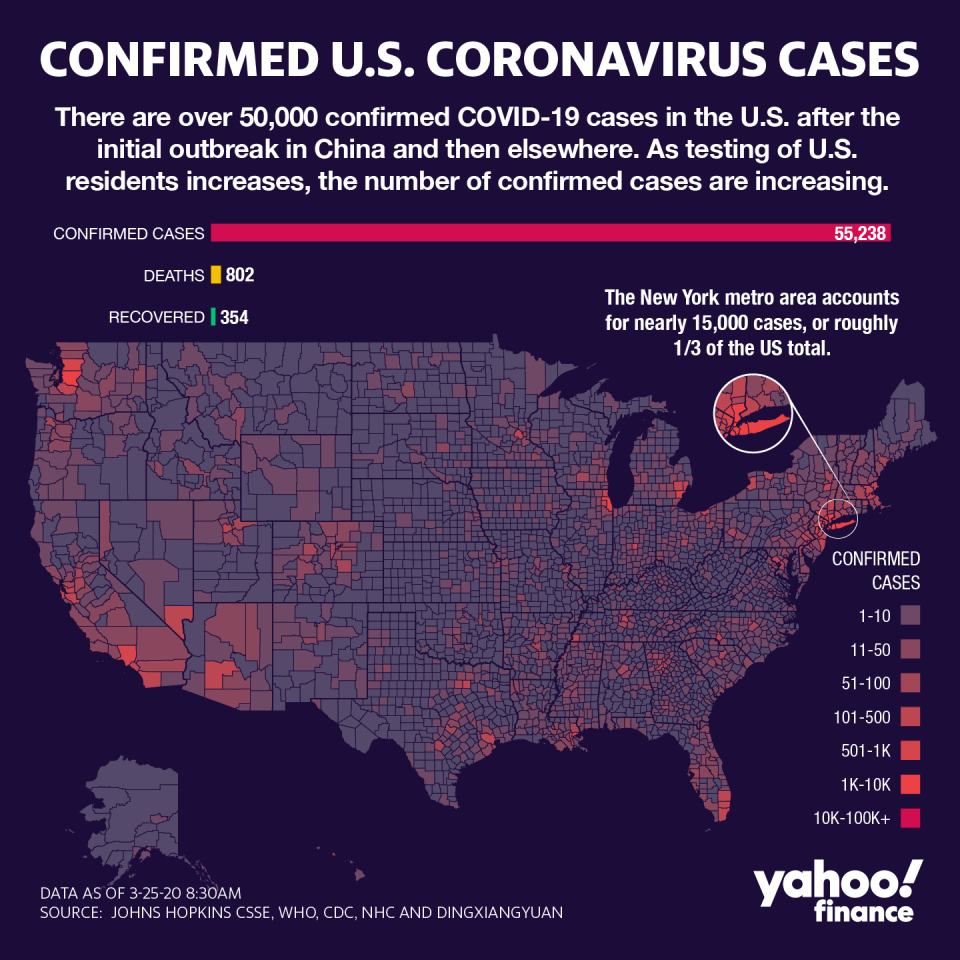Expect Trump’s approval to rise, then fall
It’s not a fluke: As the economy goes into freefall over a pandemic President Trump trivialized for weeks, the president’s approval rating is rising, not falling.
Gallup’s latest survey finds Trump’s approval rating at 49%, matching his personal best, first set in late January. Trump’s disapproval rating is 45%, for a net approval rating of 4, the highest of Trump’s presidency, by Gallup’s measure.
Trump’s approval rating could have further to run, with the nation in the early days of a crisis and massive amounts of aid about to flow from Washington. But this early bump may not last, especially as the grinding reality of a deep recession sets in and Americans endure prolonged pain.
“Over the next few weeks, I expect that Trump’s approval rating is going to go up,” Ian Bremmer, president of Eurasia Group, told Yahoo Finance on March 25. “He is presiding over the largest fiscal stimulus in America’s history, getting it done in bipartisan fashion.”
Trump has a problem, though. Despite his call for reopening the U.S. economy on Easter Sunday, April 12, there’s no quick fix for the virus or the damage it’s causing. Encouraging people go to back to work before the virus is contained could widen the pandemic, causing more business closures and prolonging the recession. In the best case, the economy could bounce back in late summer or fall, after a short but severe downturn. But a punishing recession could also last through Election Day in November if current containment efforts don’t work.
“If he were running for reelection in a few weeks, he’d probably win,” Bremmer says. “But it’s hard to imagine he’s going to be seen as successful over the next 3 to 6 months as he will over the next 2 to 3 weeks.”
Election-year recession
Analysis by Alan Abramowitz for the University of Virginia’s Center for Politics suggests the coronavirus recession could be a fatal threat to Trump’s reelection. Election-year GDP growth is a crucial factor in whether an incumbent president gets reelected—especially growth in the second quarter of the election year. And GDP growth in the second quarter this year is likely to be awful. Moody’s Analytics expects the economy to shrink by 4.2%, year-over-year, which would be worse than any single quarter during the Great Recession of 2008 and 2009.

Trump’s approval rating in the Fivethirtyeight composite of polls, which includes several surveys, is around 45%, a bit lower than in Gallup’s poll. His disapproval rating is around 51%, for a net approval of -5. The Abramowitz model suggests that a 4% drop in second-quarter GDP combined with net approval of -5 would win Trump just 176 electoral votes, 94 fewer than needed to reach the winning threshold of 270. With GDP growth that low, Trump would need a phenomenal surge in approval to win, which seems impossible given that he has profoundly alienated many Independents and nearly all Democrats.
This helps explain why Trump now describes himself as a “wartime president:” He’s hoping voters of all stripes will rally around him in an existential battle against a common enemy. Yet for his entire presidency, Trump has waged political and cultural war from the White House, and even now he’s having public battles with Democratic governors such as Andrew Cuomo of New York and Gavin Newsom of California. The early days of a war are often the easiest, because resolve has yet to be ground down by deprivation or loss. As the casualties mount, more people look for somebody to blame, and that always starts with the person who’s supposed to be in charge.
Rick Newman is the author of four books, including “Rebounders: How Winners Pivot from Setback to Success.” Follow him on Twitter: @rickjnewman. Confidential tip line: [email protected]. Encrypted communication available. Click here to get Rick’s stories by email.
Read more:
Follow Yahoo Finance on Twitter, Facebook, Instagram, Flipboard, SmartNews, LinkedIn, YouTube, and reddit.
